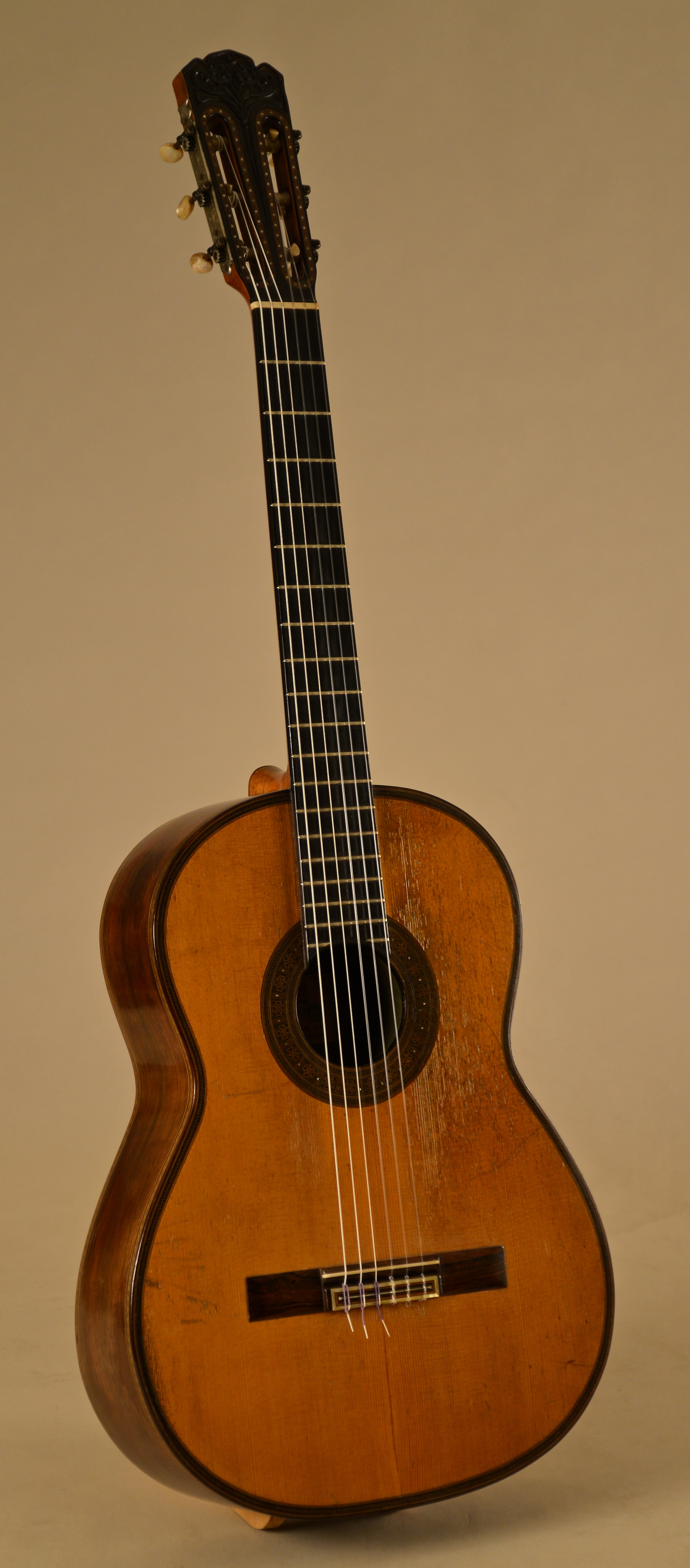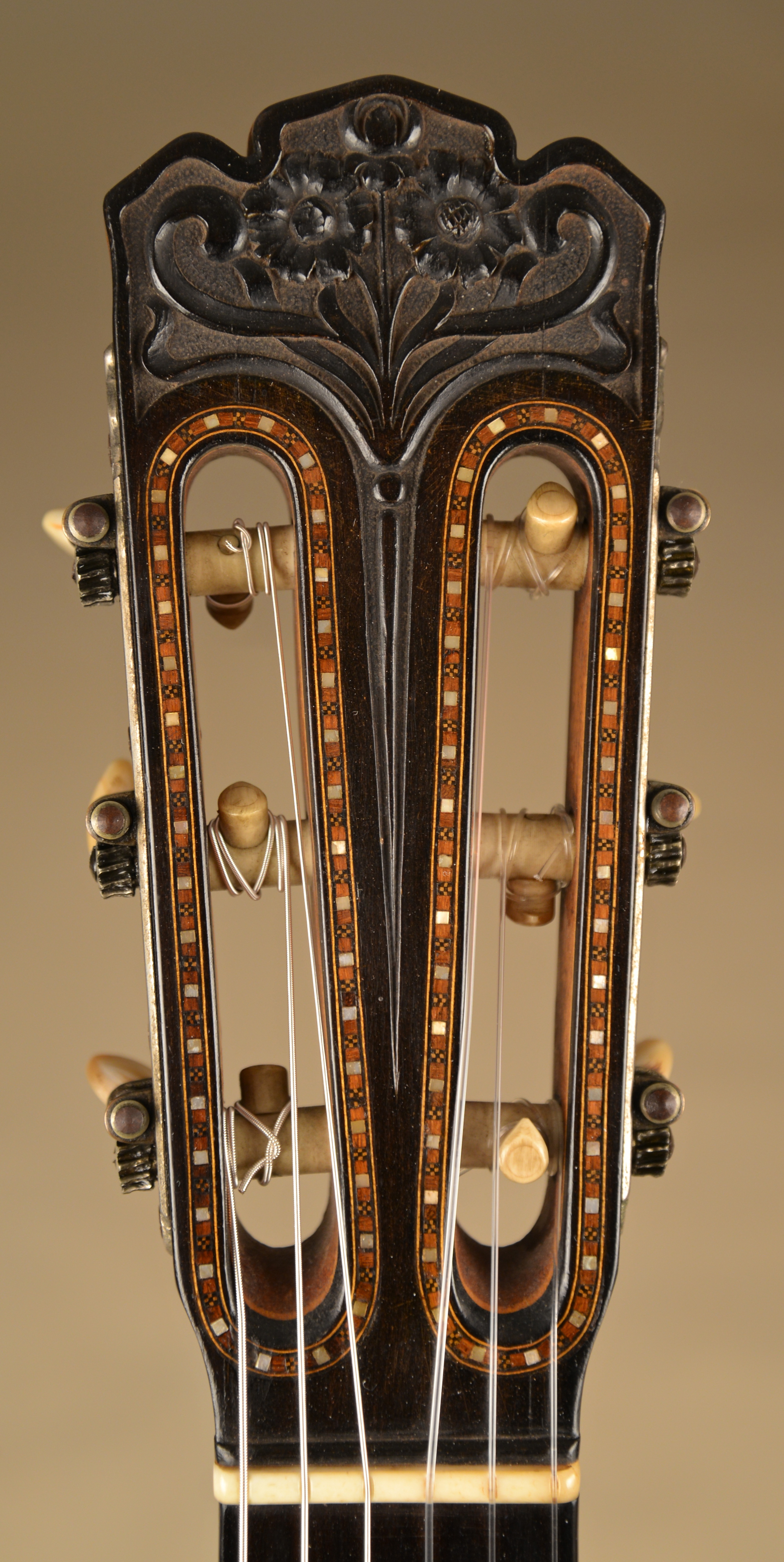
1918 Enrique Garcia No. 195
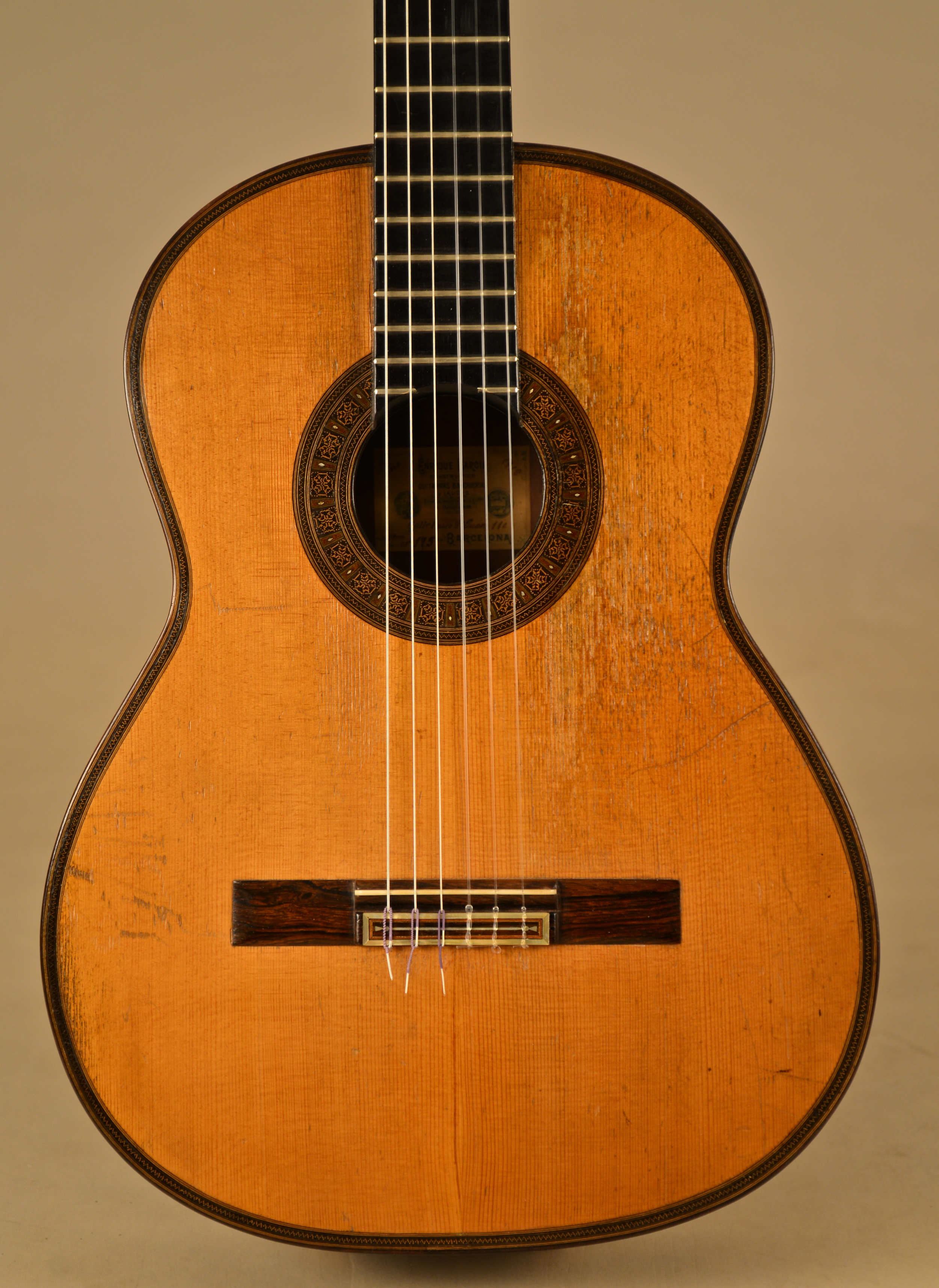
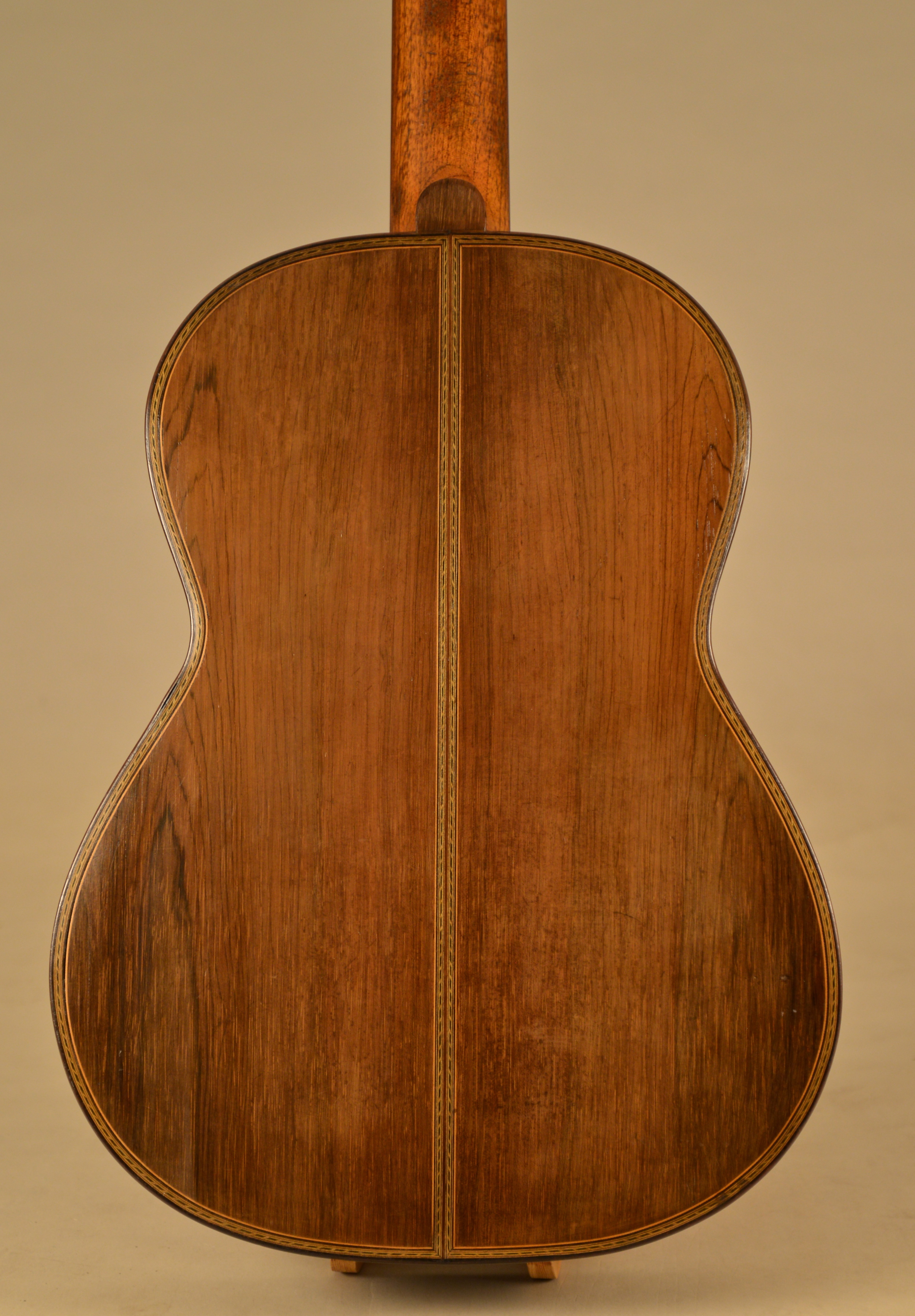
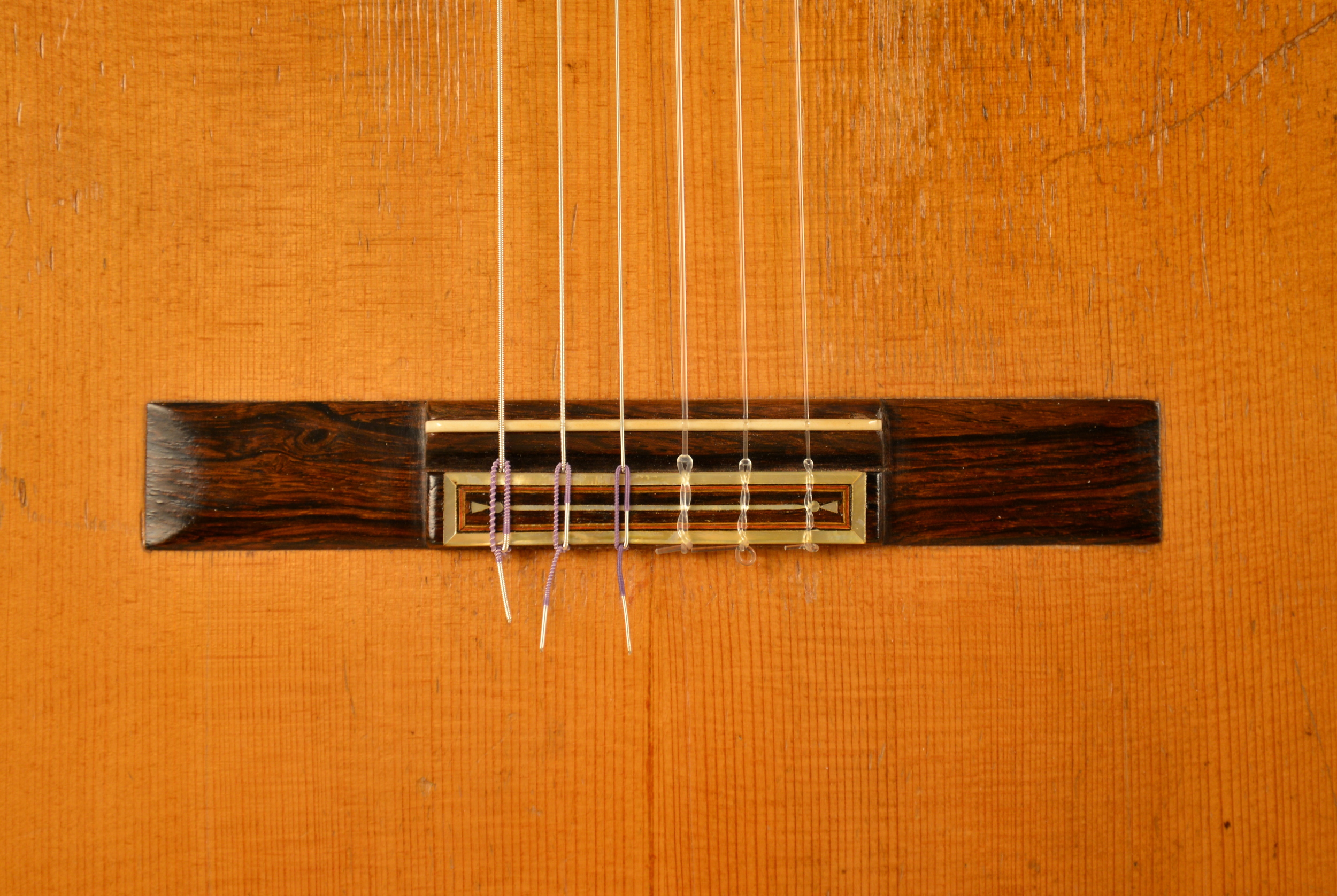
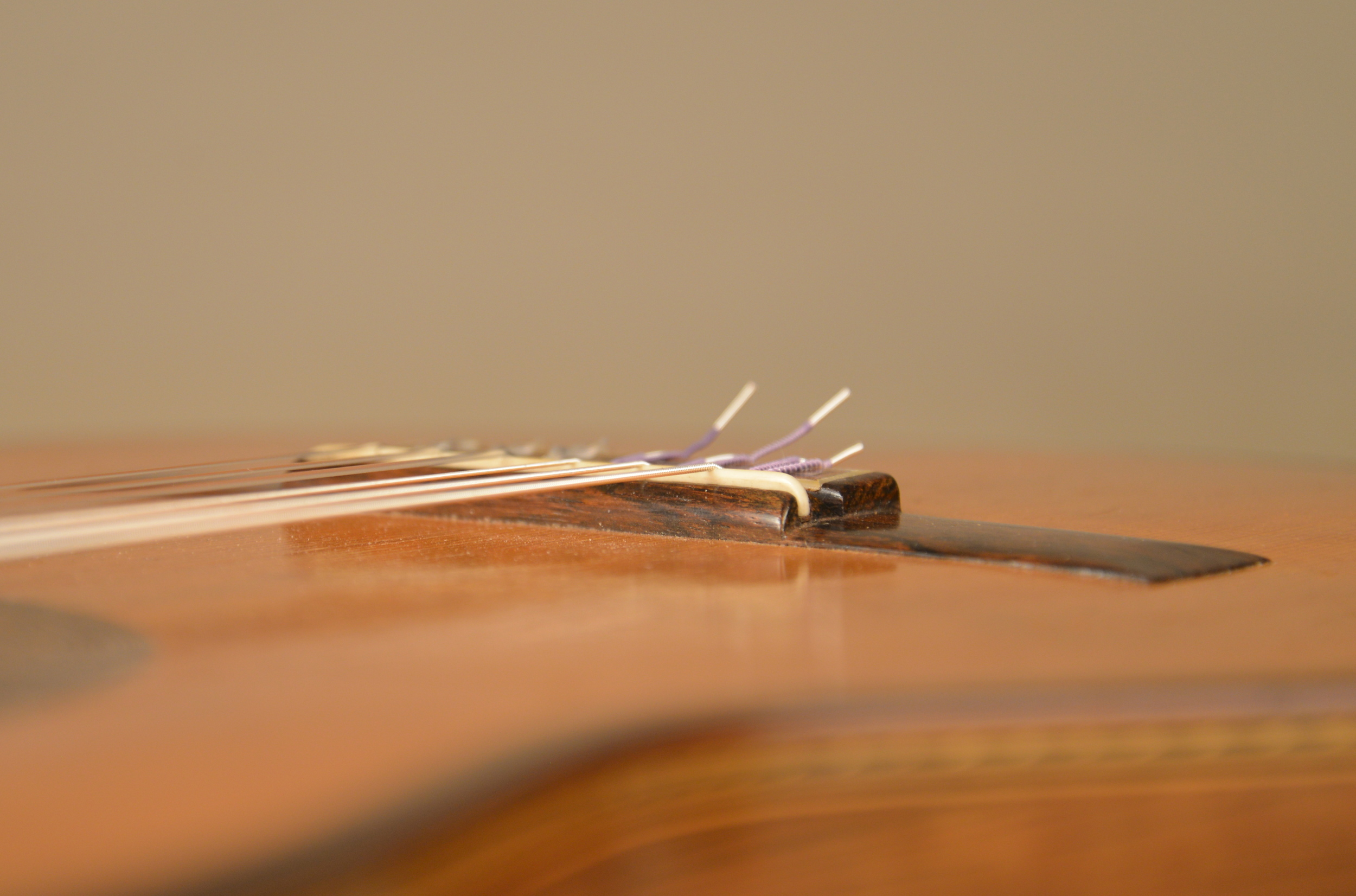
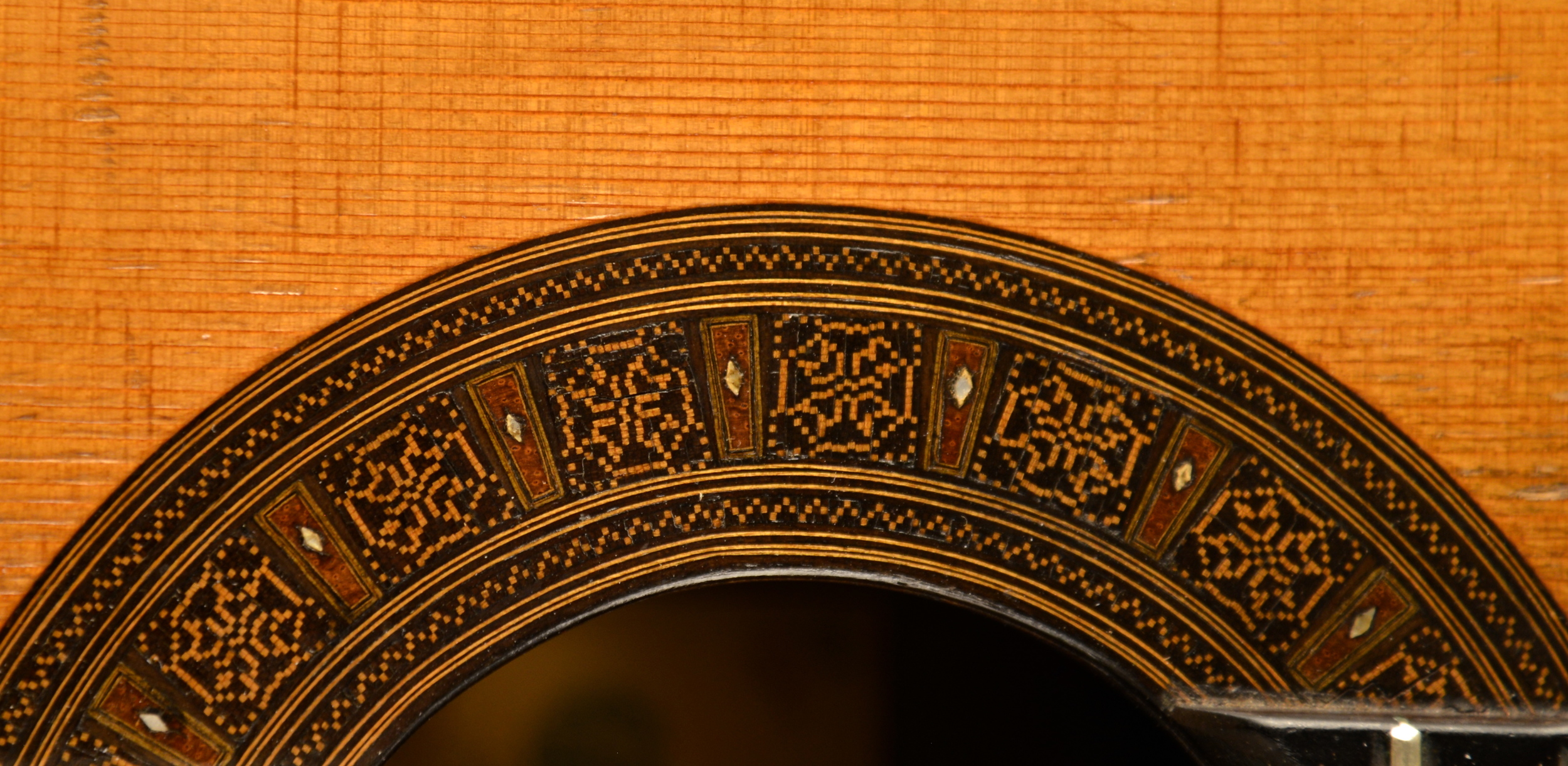
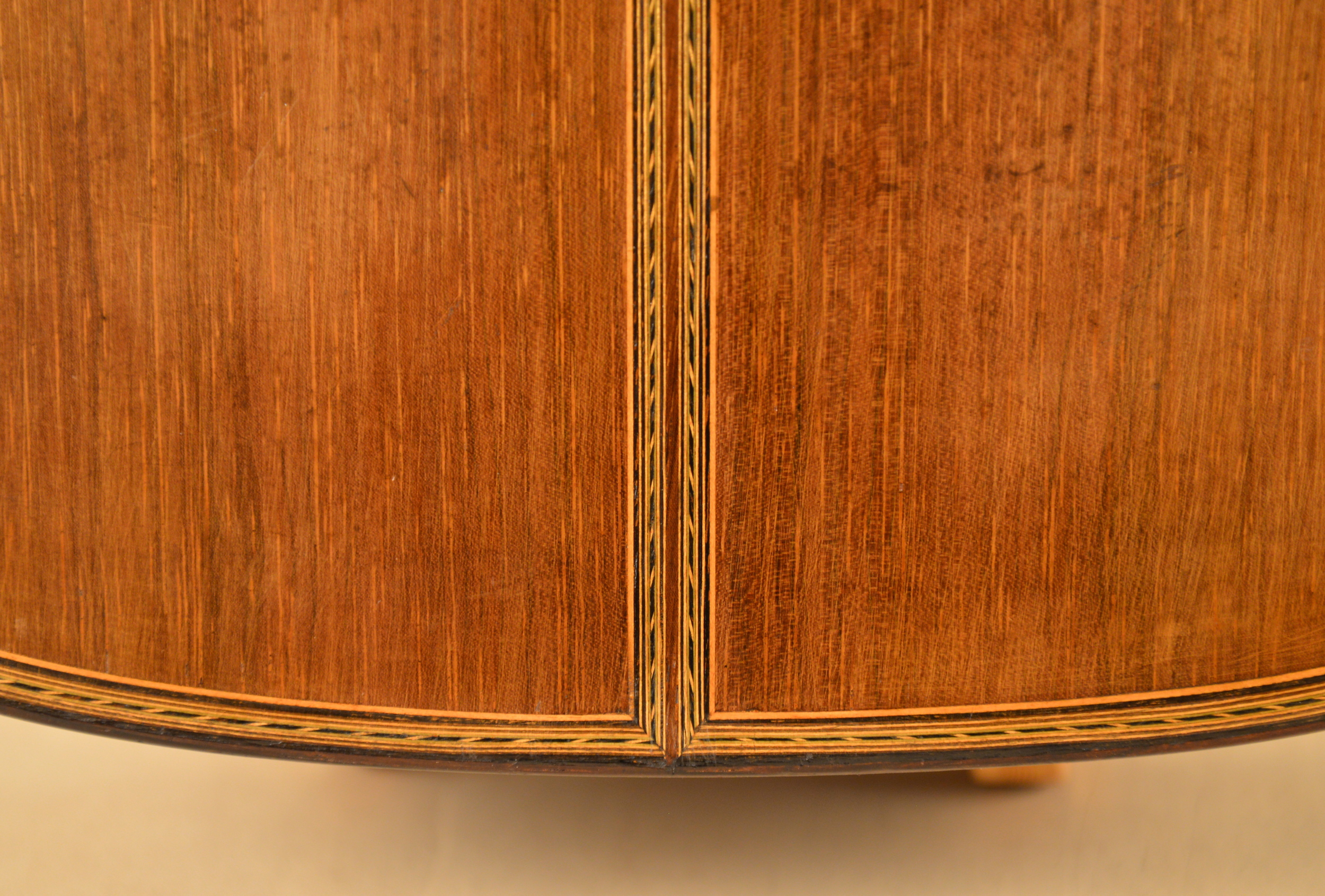
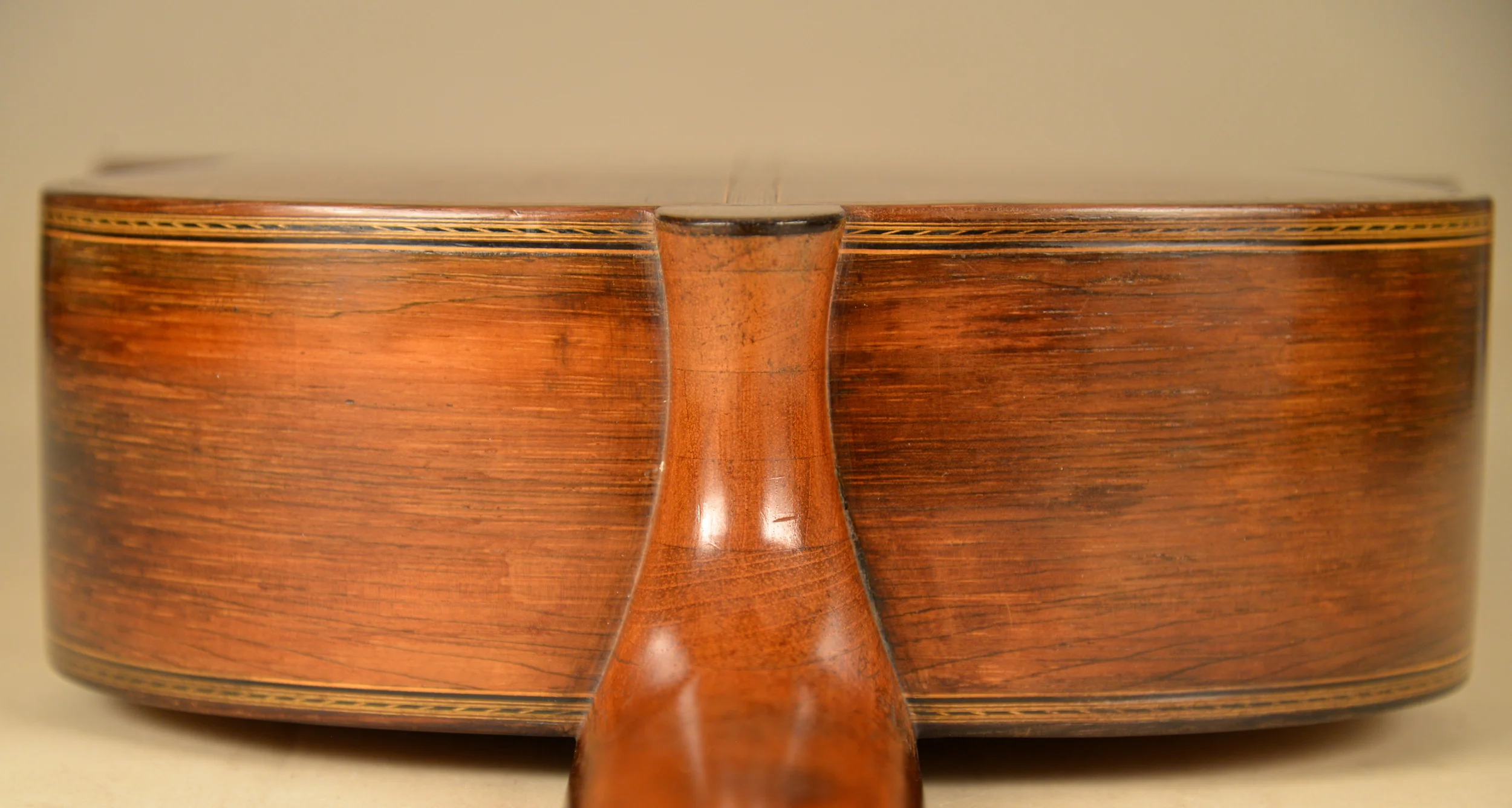
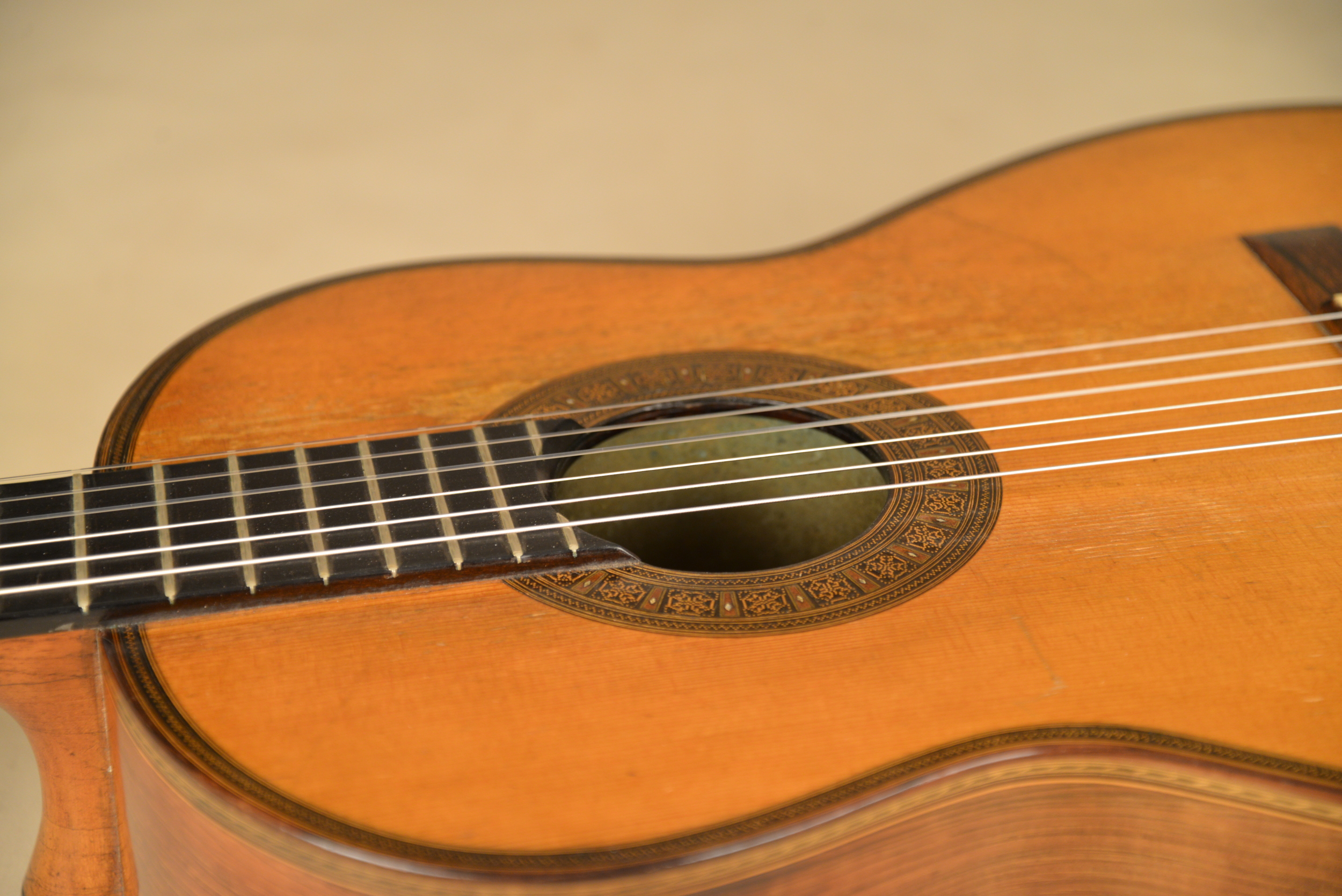



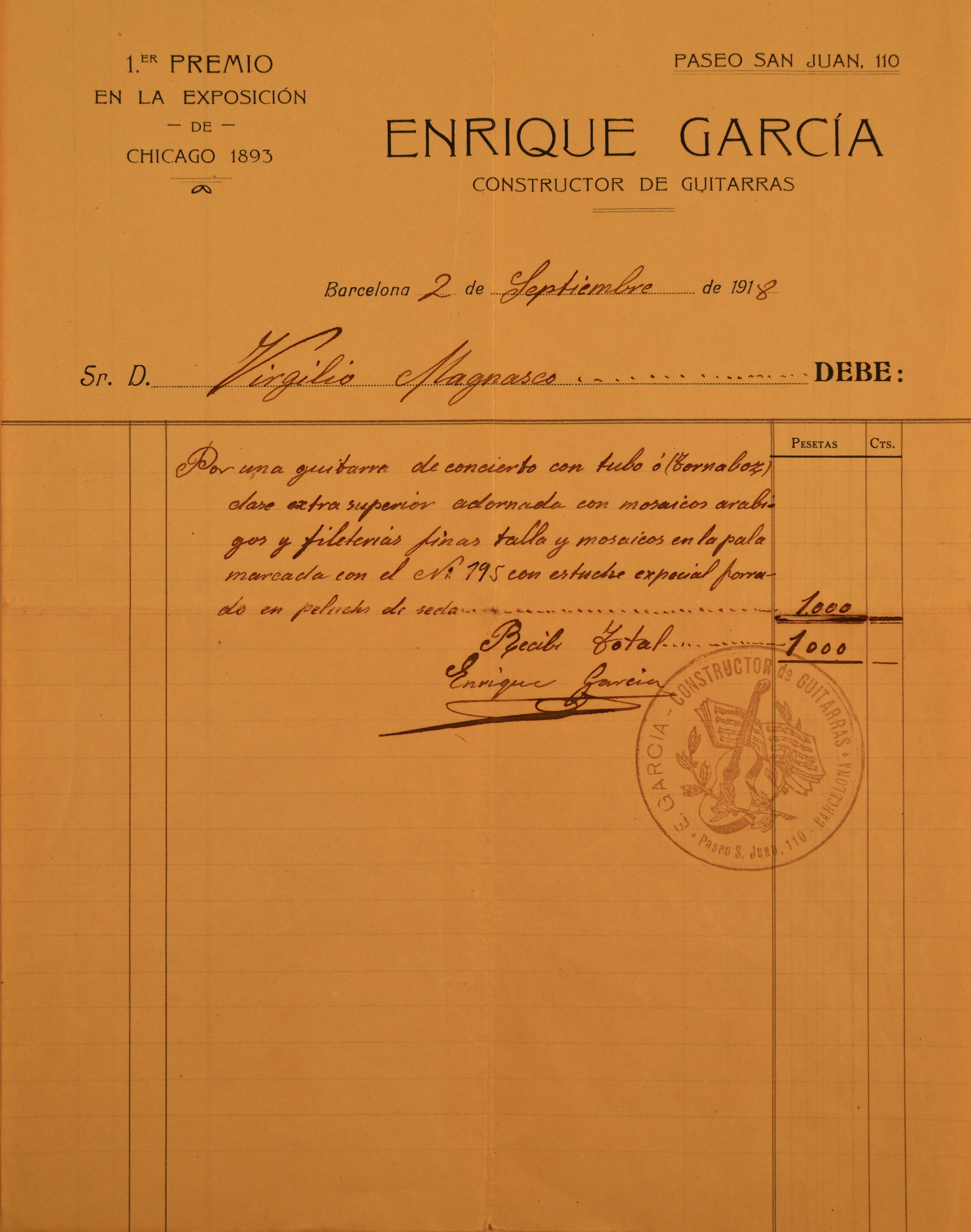

1918 Enrique Garcia No. 195 (Barcelona). Spruce top, Brazilian rosewood sides and back, 645 mm scale, original untouched condition. This rare instrument is one of only 272 known to have been made by Enrique Garcia, who began his career in the shop of Manuel Ramirez, later moving to Barcelona For more on Garcia and his biography, see my article in Vintage Guitar magazine, December, 1998, along with my monograph on this guitar in Vintage Guitar, December, 2008. In 1893 Garcia was awarded a medal for his guitars in the Columbian Exposition of Chicago. Garcia made his guitars in 3 different body sizes using various scale lengths, and with three different levels of decoration, this example being the largest and most complex offered by Garcia. Additionally it has a brass tornavoz mounted which was a common option offered by Garcia. The tornavoz was a tapered brass funnel mounted to the sound hole under the top which was supposed to “focus” or project the sound to the front of the guitar. Effectively, it lowered the pitch of the instrument. which in Garcia’s day was considered a desirable quality. The machine heads have the additional bone “pips” added to the rollers, a device invented and patented by Dr. Jimenez Barcelo in 1905. This instrument like most Garcias has 8 rather than 7 fan struts, with the extra fans being mounted on the treble side of the top. This kind of asymmetrical bracing was also used by Manuel Ramirez’ older brother Jose, who it is thought that Enrique Garcia also worked for briefly. The original buyer of this guitar, Virgilio Magnasco, was a student of both Antonio Sinopoli and Domingo Prat, who mentions Magnasco in his Diccionario de Guitarristas y Guitarreros published in 1934 on page 187, where he specifically mentions this Garcia owned by Magnasco, describing it as a true jewel of an instrument. Because the instrument still retains its original nut, saddle and frets, we can clearly see that the intended action was much lower than classical players today use, typical of early 20th century makers, who continued this tradition of low action which began with Antonio de Torres. Garcia trained his only student and successor, Francisco Simplicio, and their designs and approaches would later be echoed in the work of Ignacio Fleta and his family, thus making Garcia the foundation of the entire modern Barcelona school of makers. With the original invoice of Garcia written to Virgilio Magnasco indicating a purchase price of 1,000 Pesetas, along with the mention in the Prat Diccionario, this Garcia is probably the best documented and untouched surviving original example of Garcia’s work remaining today, and represents a highly important original example of one of the most important makers of the early 20th century.
